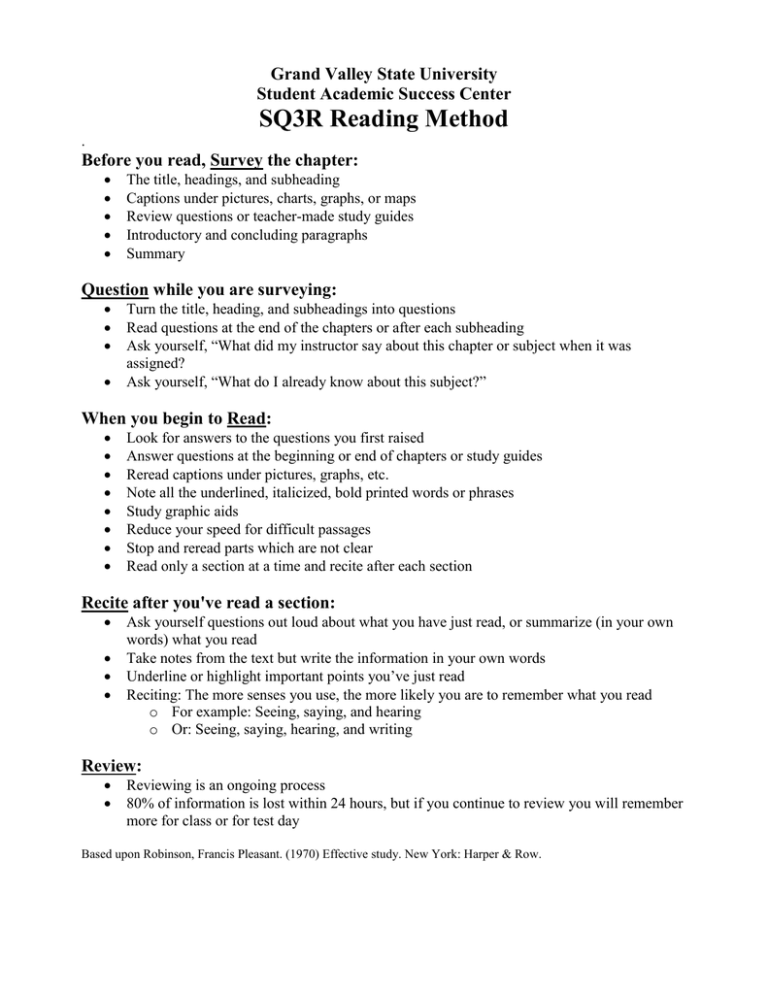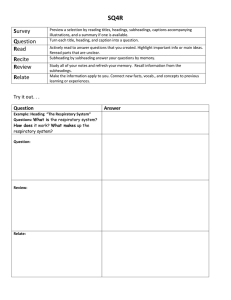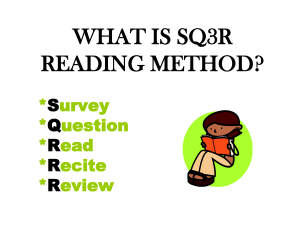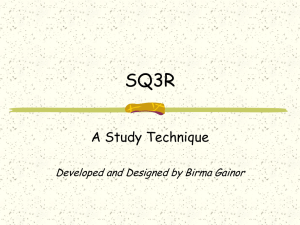SQ3R Reading Method Grand Valley State University Student Academic Success Center
advertisement

Grand Valley State University Student Academic Success Center SQ3R Reading Method . Before you read, Survey the chapter: The title, headings, and subheading Captions under pictures, charts, graphs, or maps Review questions or teacher-made study guides Introductory and concluding paragraphs Summary Question while you are surveying: Turn the title, heading, and subheadings into questions Read questions at the end of the chapters or after each subheading Ask yourself, “What did my instructor say about this chapter or subject when it was assigned? Ask yourself, “What do I already know about this subject?” When you begin to Read: Look for answers to the questions you first raised Answer questions at the beginning or end of chapters or study guides Reread captions under pictures, graphs, etc. Note all the underlined, italicized, bold printed words or phrases Study graphic aids Reduce your speed for difficult passages Stop and reread parts which are not clear Read only a section at a time and recite after each section Recite after you've read a section: Ask yourself questions out loud about what you have just read, or summarize (in your own words) what you read Take notes from the text but write the information in your own words Underline or highlight important points you’ve just read Reciting: The more senses you use, the more likely you are to remember what you read o For example: Seeing, saying, and hearing o Or: Seeing, saying, hearing, and writing Review: Reviewing is an ongoing process 80% of information is lost within 24 hours, but if you continue to review you will remember more for class or for test day Based upon Robinson, Francis Pleasant. (1970) Effective study. New York: Harper & Row.
![Reading Strategies for Textbooks [doc]](http://s3.studylib.net/store/data/006747703_1-51c5546247305949ad82bea621c6803f-300x300.png)




